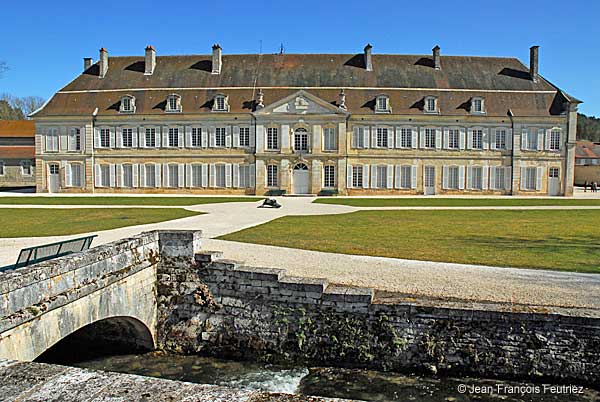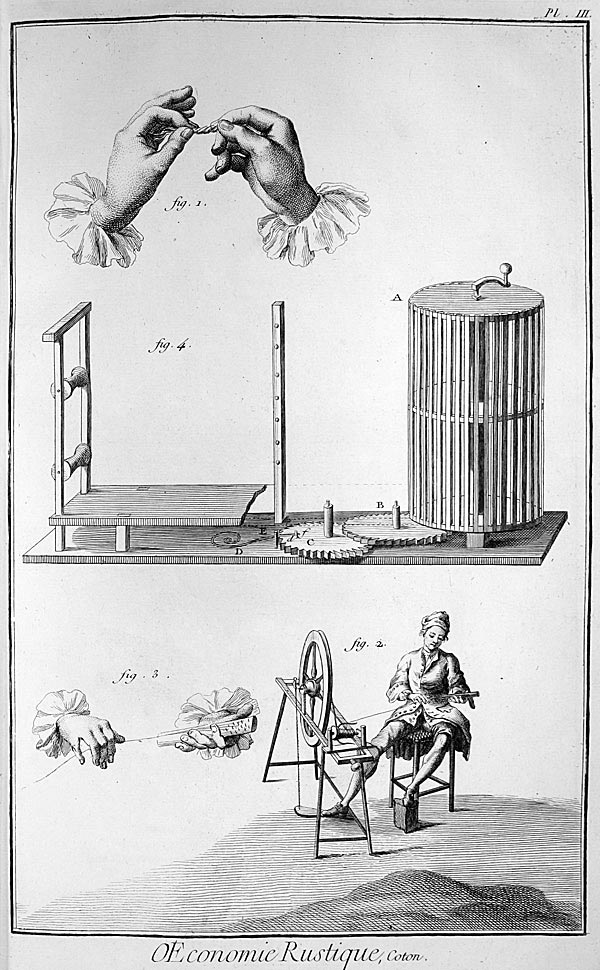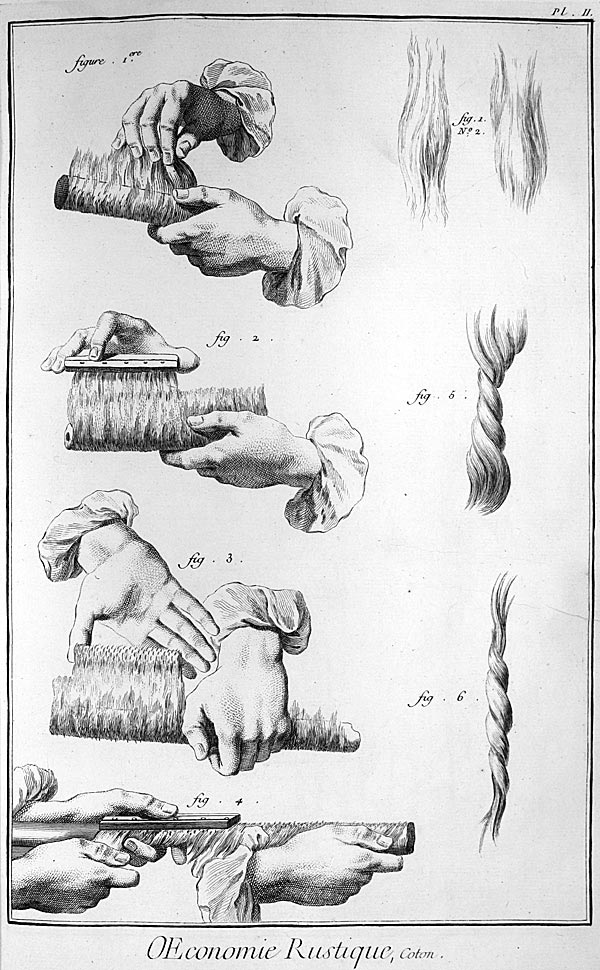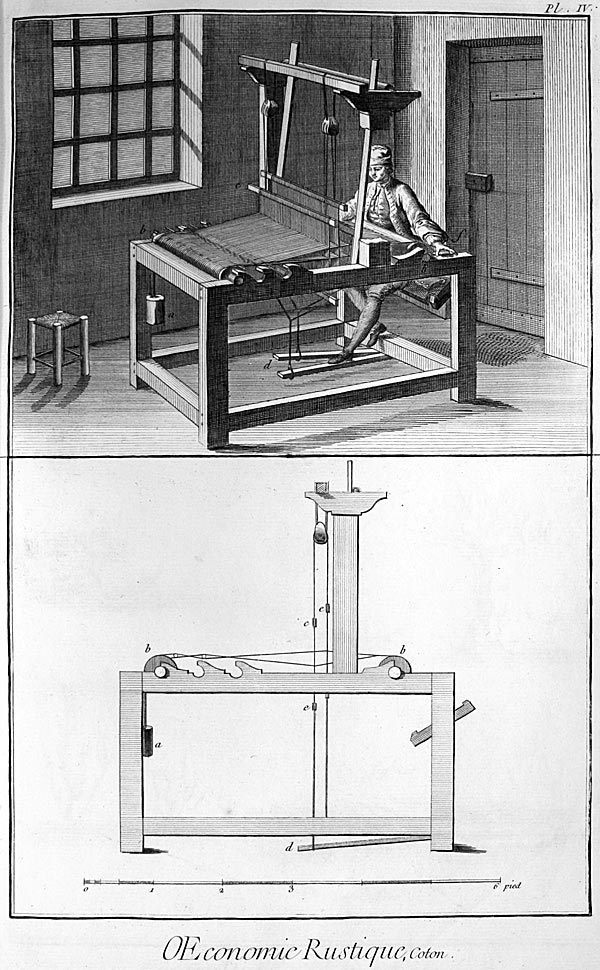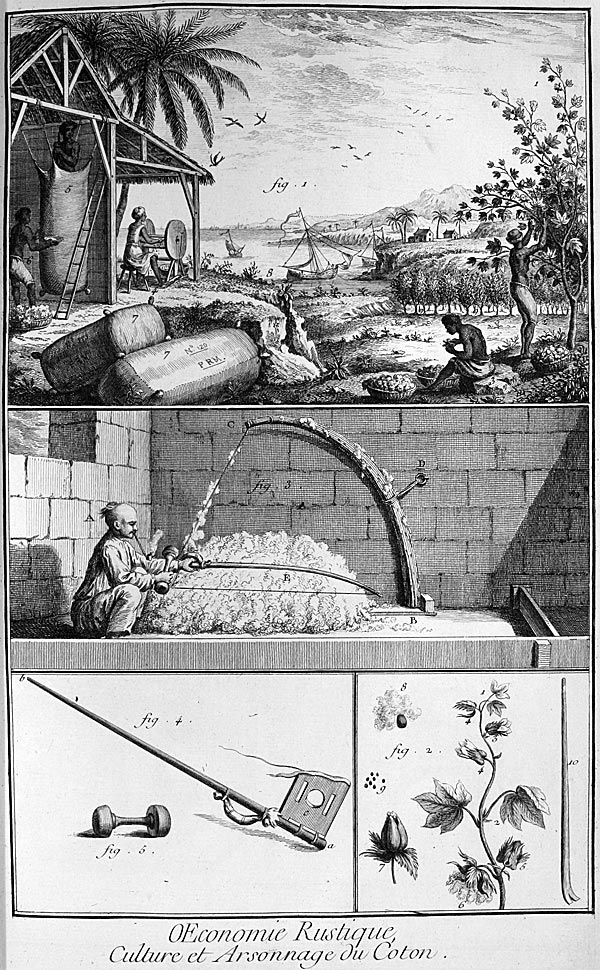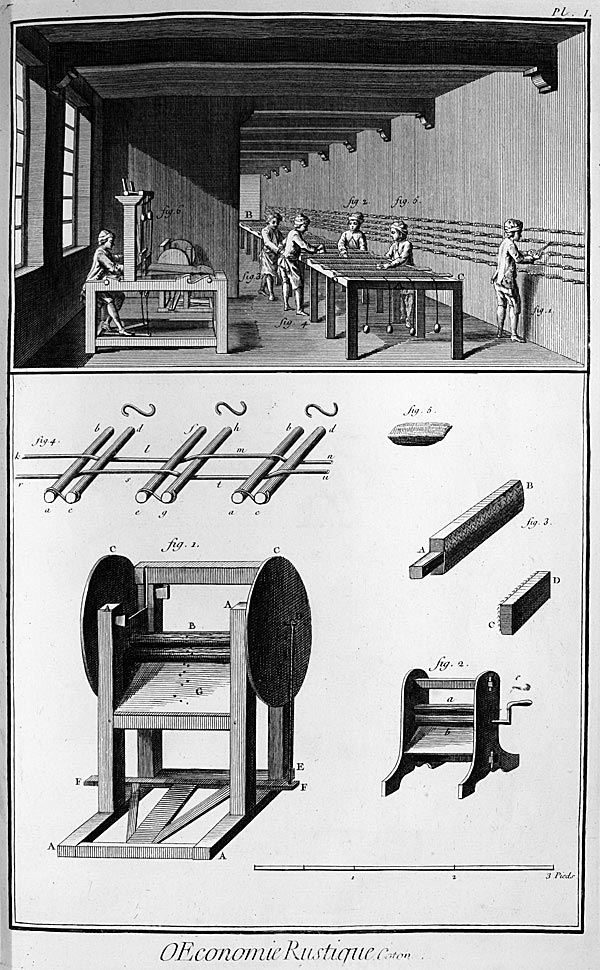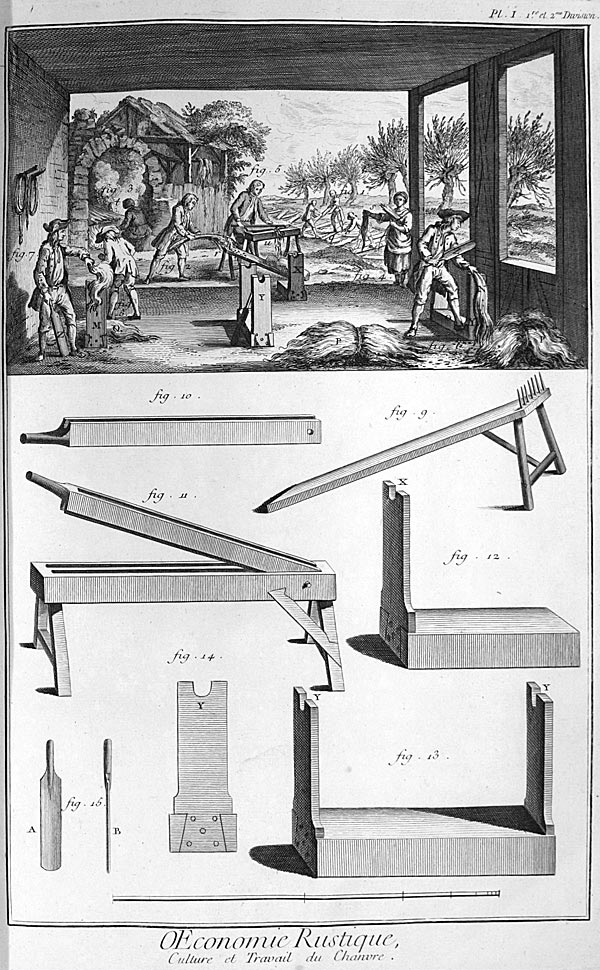The Cistercian Monks of Auberive
"ABBEY, A Monastery or Religious House, governed by a Superior, who takes the title of Abbot or Abbess".
Denis Diderot
The cotton industry, which was growing rapidly during the 18th Century, is covered in 5 illustrations in the Encyclopaedia. This example details how to polish and thread cotton, with the hands of the threader shown separately, as well as the warping machine.
In 1797, Denis Diderot's son-in-law, Abel Caroillon de Vandeul, set up a cotton mill in the mill of the old Auberive abbey. He modified the mill race's waterfall to increase flow, and also installed spinning machines created by the English engineer Dobson, which worked on hydraulic power. When the cotton mill closed down, Diderot's daughter, Marie-Angélique, decided to live there.
A rich and ancient Cistercian abbey, Auberive was founded along the Aube river in 1135, by Saint Bernard and the Bishop of Langres.. The monastery was particularly prosperous during the 13th Century, but ravaged by several wars before being rebuilt in the 18th Century. During the 19th Century, the site became a women's prison. Its most famous prisoner was Louise Michel, who was incarcerated for 20 months following the events of the Paris Commune. The Abbey is today one of the major cultural sites of the Pays de Langres. On a tour, visitors can see the 12th-Century Cistercian choir, the cloister, the 18th-Century façade, Jean Lamour's grating, the gardens, refectory and cells...
One of the wings houses a Contemporary Arts Centre, devoted to Art in all its forms.
